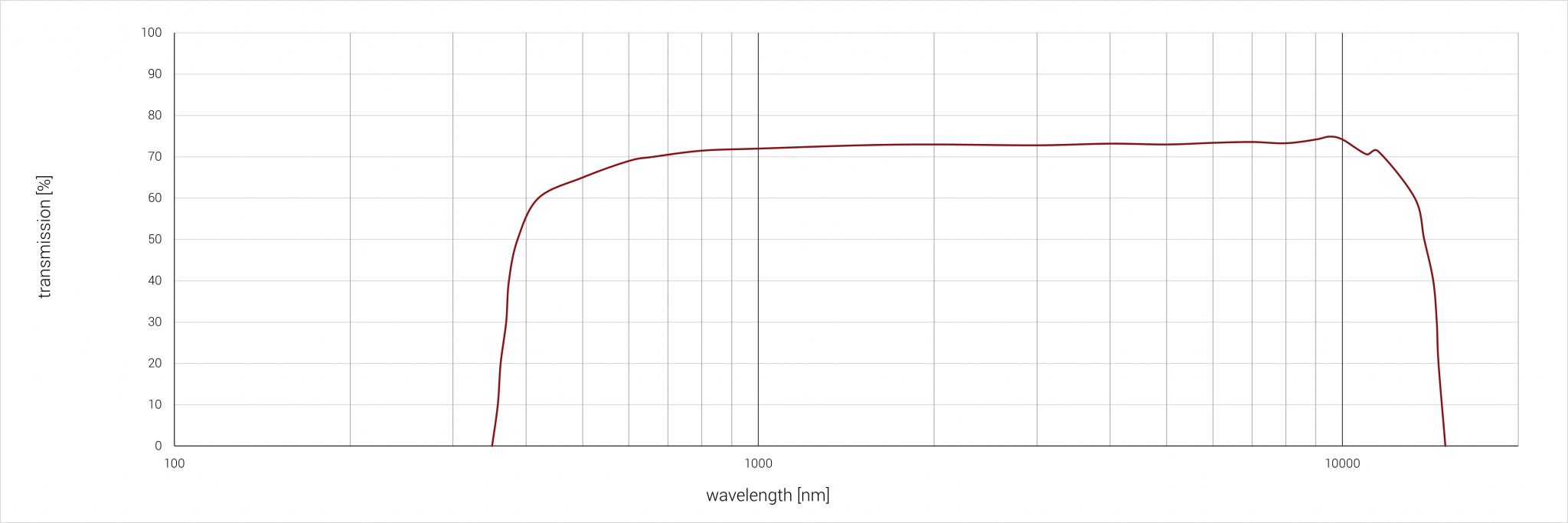Zinc sulphide
Material
ZnS
Zinc sulphide (ZnS) is a material that is used for optical components for the infrared range. In contrast to other materials for the infrared range such as germanium or silicon, zinc sulphide is also transparent in the visible spectral range. ZnS is produced by chemical vapor deposition (CVD). The material is divided into two grades, which differ in their transmission properties:
Infrared quality (FLIR) is a polycrystalline material that is used as it was deposited during production. It is used for optics in the wavelength range between 0.4 µm and 12 µm.
Multispectral quality (ms) is post-treated in a process step after growth in order to eliminate microscopic pores/cavities and defects that occur during the CVD process. This improves the transmission properties of the material so that the multispectral zinc sulphide can be used in the wavelength range between 0.35 µm and 14 µm. The multispectral zinc sulphide is used for windows or domes that require a single aperture or beam path for several wavelength bands, such as in visual cameras, medium and long-wave detectors and laser-based rangefinders. Multispectral zinc sulphide is also used in the field of temperature measurement.
Properties
Spectral properties

Sample thickness: 2 mm

